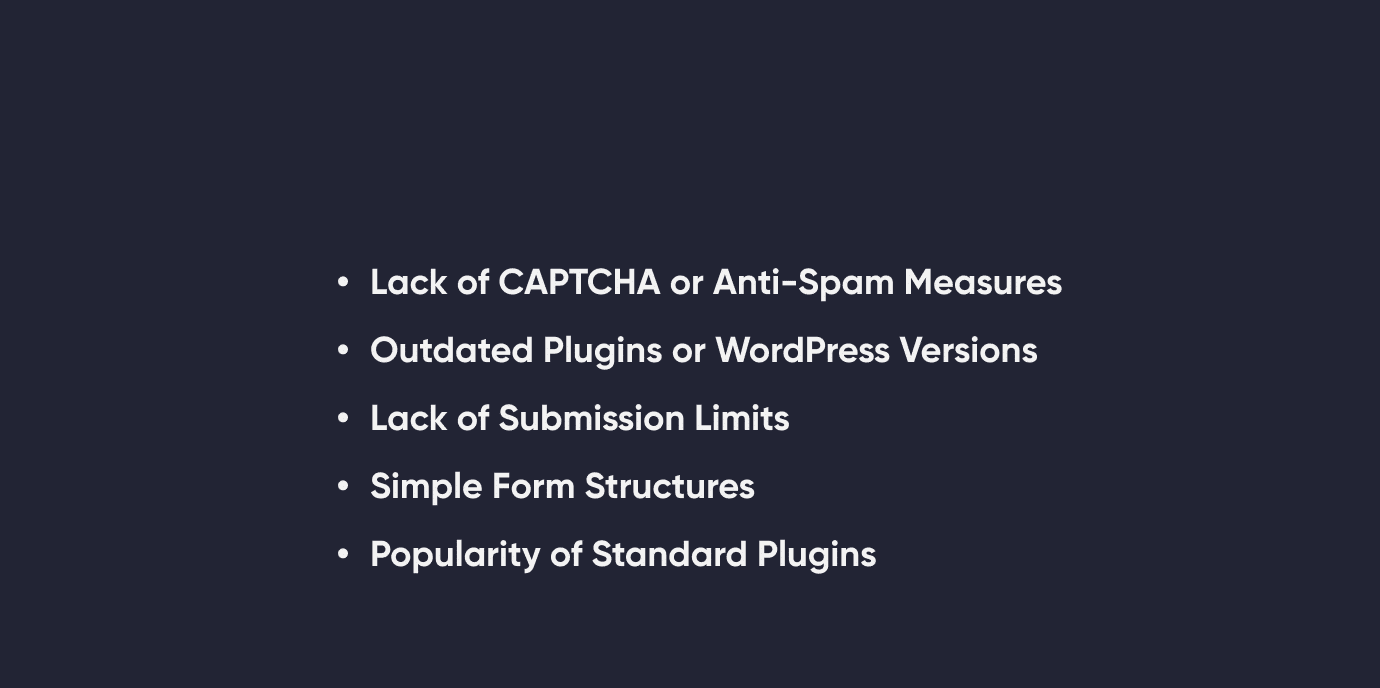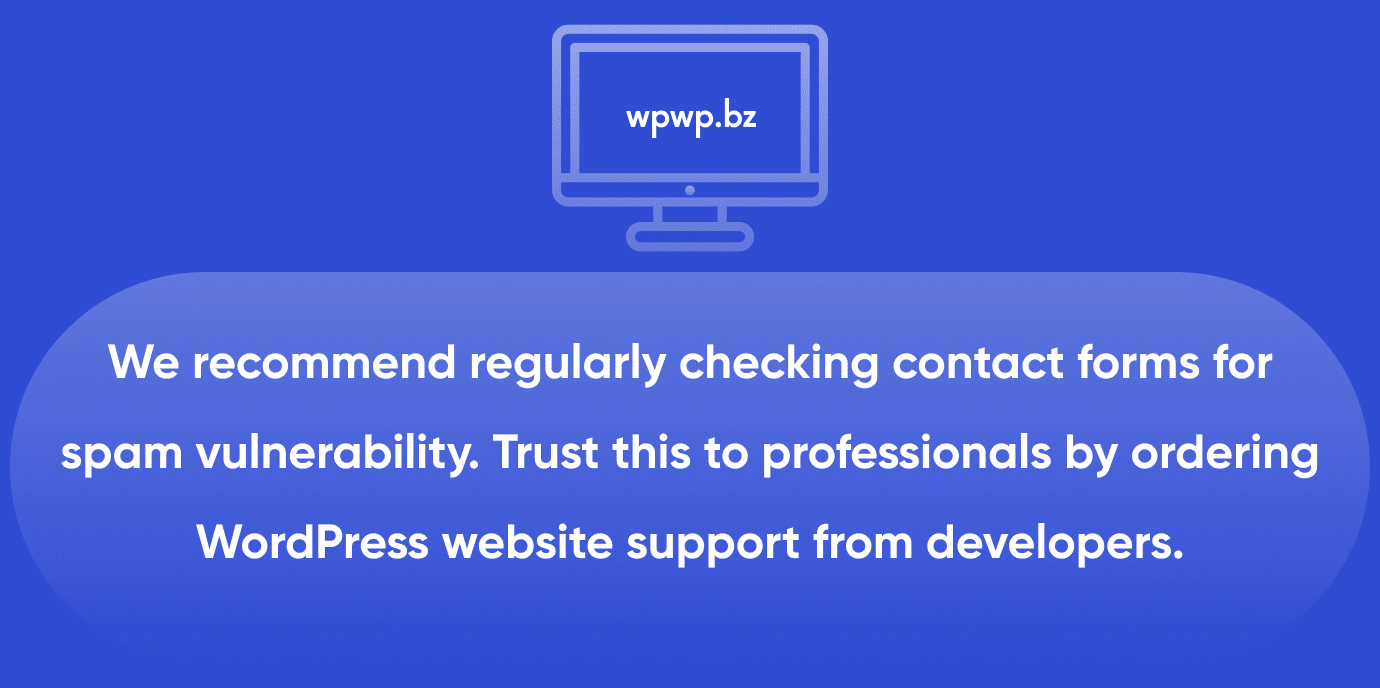
The Most Popular Reasons
Lack of CAPTCHA or Anti-Spam Measures.
Many WordPress contact forms do not have CAPTCHA or similar anti-spam tools implemented. CAPTCHA (Completely Automated Public Turing test to tell Computers and Humans Apart) is designed to block automated bots by requiring users to complete a simple task that is easy for humans but difficult for machines. Without this protective measure, bots can easily fill out and submit forms, leading to a flood of spam messages.
Popularity of Standard Plugins.
Popular contact form plugins like Contact Form 7, WPForms, and Ninja Forms are widely used across numerous WordPress sites. Spammers often target these plugins because they are well-documented and commonly used, making it easier for them to develop scripts that can automate the form submission process.
Lack of Submission Limits.
Many forms allow unlimited submissions from the same IP address, which can be exploited by spammers to send a large volume of spam messages quickly. Without rate-limiting or restrictions on the number of submissions, there is no deterrent to prevent spammers from abusing the form.
Outdated Plugins or WordPress Versions.
Using outdated versions of WordPress or its plugins can expose your site to security vulnerabilities. Spammers can exploit these vulnerabilities to bypass security measures and automate spam submissions through contact forms.
Simple Form Structures.
Forms that have minimal fields or lack validation checks are easier for bots to fill out. Simplicity in form design, while beneficial for user experience, can also be a vulnerability, as it does not require complex input that could deter automated spam scripts.
Understanding these reasons we can help website owners take proactive steps to protect their contact forms from spam, improving both the security and user experience.

Solutions to Prevent WordPress Contact Form Spam
To prevent spam, our team of professional WordPress developers offers the following improvements for your site as part of its comprehensive support:
CAPTCHA or reCAPTCHA Implementation. Adding CAPTCHA or Google reCAPTCHA to forms can help block automated submissions by bots. This is one of the most effective ways to prevent spam.
Spam Filters Enabling. Some form plugins offer built-in or add-on spam filters. Use these to block known spam patterns and keywords.
Submission Limits Set Up. Using plugins that allow you to limit the number of form submissions from a single IP address over a certain period.
Keep WordPress and Plugins Updated. We offer regular WordPress updates and all installed plugins. It helps protect your site from vulnerabilities that spammers might exploit.
Anti-Spam Plugins Using. Consider installing plugins specifically designed to combat spam, such as Akismet, which helps filter spam in comments and forms on your site.
Hidden Fields (Honeypot Technique) Adding. This method involves adding hidden fields to the form that are not visible to users but can trap bots. If a bot fills out this hidden field, the form submission is blocked.
More Complex Forms Using. Adding additional required fields or conditional logic can make forms more challenging for bots to fill out, reducing spam.
By implementing these solutions, we can significantly reduce the amount of spam coming through your WordPress contact forms.

WPWP: Get a Professional WordPress Website Support
Our company offers professional support for your WordPress website. Developers with many years of experience provide a comprehensive approach, eliminating any malfunctions when they occur, including with contact forms. Reasons to contact us:
- strict adherence to deadlines;
- guaranteed results;
- performance check; free audit;
- transparent pricing.
Our specialists have been working with the WordPress system for many years, so they know all the subtleties and nuances. You can see examples of our projects in the «Portfolio» tab.












